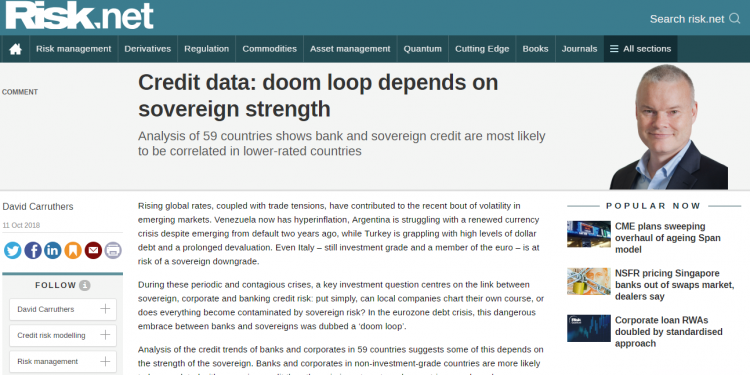
Rising global rates, coupled with trade tensions, have contributed to the recent bout of volatility in emerging markets. Venezuela now has hyperinflation, Argentina is struggling with a renewed currency crisis despite emerging from default two years ago, while Turkey is grappling with high levels of dollar debt and a prolonged devaluation. Even Italy – still investment grade and a member of the euro – is at risk of a sovereign downgrade.
During these periodic and contagious crises, a key investment question centres on the link between sovereign, corporate and banking credit risk: put simply, can local companies chart their own course, or does everything become contaminated by sovereign risk? In the eurozone debt crisis, this dangerous embrace between banks and sovereigns was dubbed a ‘doom loop’.
In this series of monthly articles from Risk.net, David Carruthers, head of research at Credit Benchmark, analyses the credit trends of banks and corporates in 59 countries to determine whether local companies can remain immune from sovereign credit risk contagion. Also covered this month is the growing divergence in credit risk between Main Street and Silicon Valley companies, a comparison of credit trends for Eurozone and Turkish banks, and a view of increasing volatility observed across equity indexes.
Read the full article using the below link or in the October edition of Risk Magazine.